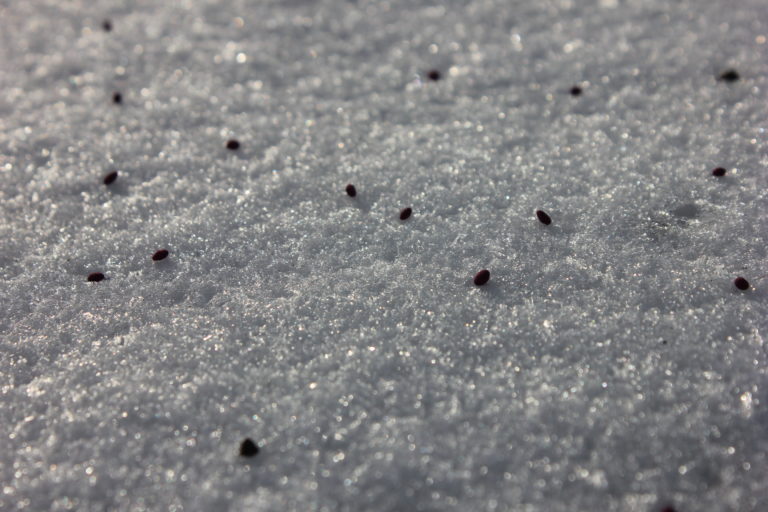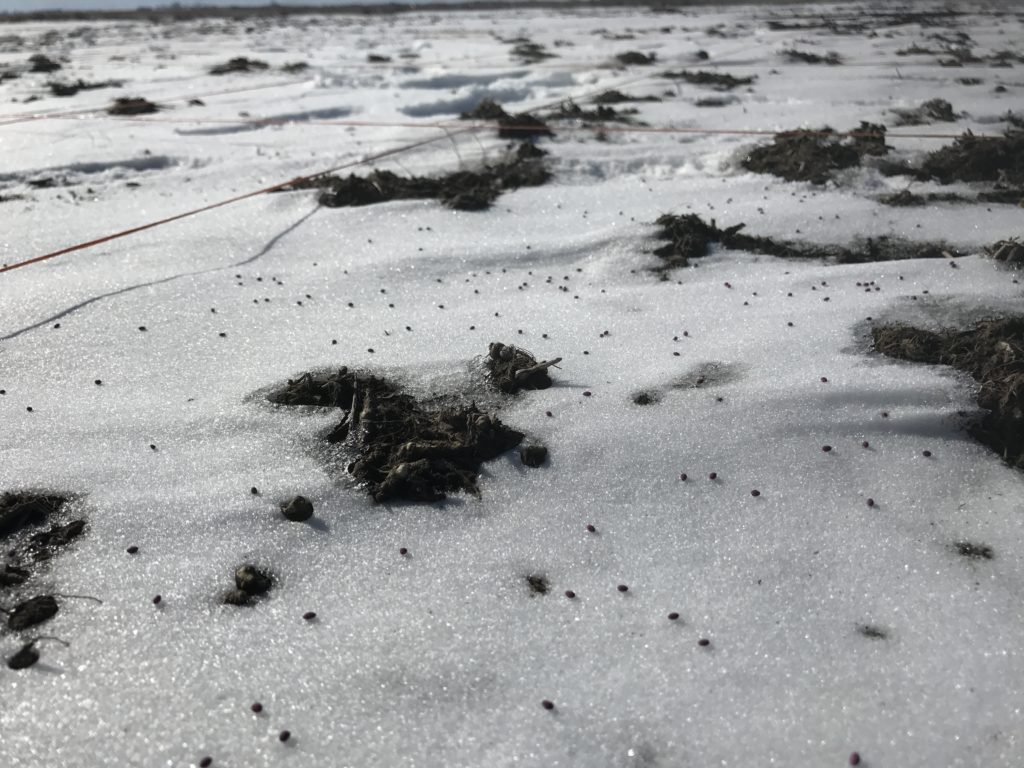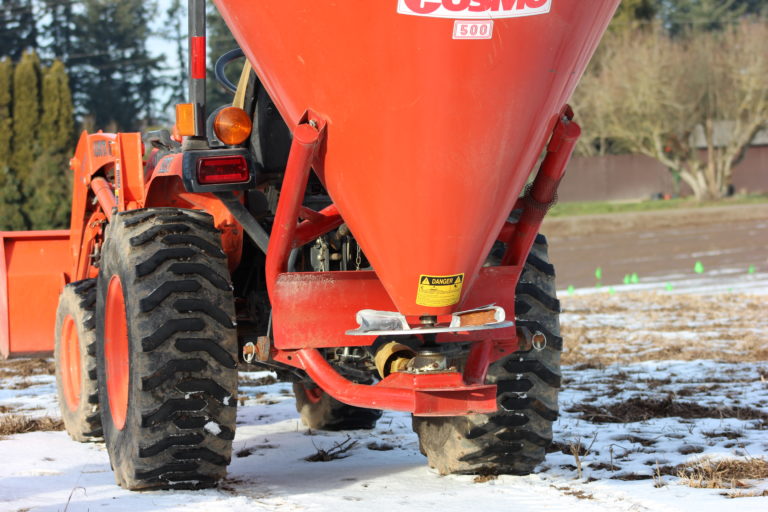Even though the ground may be frozen or covered with snow where you live, the turn of the year means it is time to seriously start mapping out your spring and summer forage plan.
March is a perfect time to think about dormant seeding your pastures with a legume.
Extended growing seasons, higher yields, and feeding quality, along with increased establishment rates and convenience are just a few benefits frost seeding can bring to your farm or ranch.
What Is Frost Seeding?
Dormant seeding, or frost seeding, is accomplished by broadcasting seeds across the frozen ground –preferably with no snow cover. The natural heaving of the soil in the winter works the seed into the top 0.25 inches of soil. Since the clover seed can germinate and start growing once weather becomes favorable instead of having to wait until soil firms up enough to get drilling equipment into the field, frost seeding can increase establishment.
What’s The Best Clover For Frost Seeding?
Before giving frost seeding a try, it is important to do your homework on seed selection, only choosing cold-tolerant varieties that will survive subfreezing temperatures.
In the past, the most prominent legume species used in frost seeding was red clover. However, improved plant breeding is bringing more species into the frost seeding offering.
Frosty Berseem Clover
One of the most recent developments is Frosty Berseem Clover, the first cold-tolerant Berseem Clover on the market.
Before its development, the ability to capture the benefits of both frost seeding and berseem clover into one system hasn’t been possible. But with the ability to thrive in temperatures as low as 5 degrees Fahrenheit and zero snow cover, a cold-tolerant berseem clover allows for the best of both.
Cold tolerance isn’t the only thing that makes Frosty Berseem special. Unlike red clover, there haven’t been any cases of bloat documented. Also, unlike red clover, Frosty Berseem does not cause photosensitivity and does not have estrogen-related issues.
When it comes to grazing animals, Frosty Berseem clover is the safe choice when renovating pastures with clovers!

Frosty Berseem Clover is also one of the few clovers that doesn’t cause bloat, making it great choice for livestock producers.
In a trial conducted by Mississippi State University, it produced non-bloating forage with a crude protein content of 20.5%.
In a separate trial by Pennsylvania State University, the cold tolerant variety produced more than 4 tons of dry matter per acre in a two-cut hay system, while fixing 150 pounds of nitrogen per acre.

When harvesting that bountiful Frosty crop, make sure to leave enough plant material, or top-growth with leaves so that it can re-grow. About 4 inches will do the trick. Unlike alfalfa, Frosty’s energy factory – which produces re-growth, is in the plant material above ground.
FIXatioN Balansa Clover
FIXatioN Balansa Clover is an excellent choice for incorporating into pastures. FIXatioN has shown very good performance and features crude protein levels and digestibility that exceed that of most other legumes. While FIXatioN is an annual clover, it is capable of re-seeding itself and thus, will remain part of your pasture for years to come. FIXatioN thrives in heavy clay soils that can become waterlogged and offers the best performance of all clover species in acidic soils.
Crimson Clover
Kentucky Pride Crimson Clover is late maturing, flowering up to two weeks later than other varieties of crimson. It was selected for its unique cold tolerance and ability to produce much more forage than its competitors. Kentucky Pride is an excellent component in mixes providing quality forage. Its roots can grow down beyond 30 inches, breaking down hard pans in the soil.
AberLasting Clover
AberLasting is the first Caucasian white clover hybrid to be developed anywhere that offers drought-tolerant rhizomatous root characteristics as well as the nutritive and N-fixing benefits of white clover. Developed through conventional crossing techniques, AberLasting is a small-leaved white clover that has proven to be drought tolerant and persistent, even in clover root weevil areas, and therefore is ideal for long-term grazing. AberLasting was bred for stress tolerance, grazing tolerance, and pest and disease resistance and are fully compatible with all Grassland Oregon ryegrass cultivars.
Dynamite Red Clover
Dynamite is a high-yielding, double-cut red clover that was selected for both improved disease resistance and forage production. It is ideal for use throughout the United States and Canada. It exhibits early spring growth with abundant regrowth after harvest which improves the overall life of stand. It is less fibrous making it more digestible, which can lead to an increase in animal performance in terms of both milk and meat production. Red clover should be avoided if the pasture is used by either horses or sheep.
Frost Seeding Into Alfalfa
Frosty Berseem clover’s physical appearance, forage quality, and dry downtime are similar to that of alfalfa. Making Frosty the number one choice for filling in thin stands of alfalfa. Frosty is tolerant of wetter soils than alfalfa so if you have areas in your hay field that drowned out, Frosty Berseem can fill the void.
Frosty Berseem Clover is the variety to use to incorporate into declining alfalfa stands. Frosty is a multi-cut berseem clover that is similar in appearance and in forage quality to that of alfalfa. Frosty is also one of the few clover varieties that have been shown to have little to no incidence of bloat.
In a recent trial conducted in Mississippi, Frosty was sown as a monoculture and directly grazed. No bloat was observed among the cattle that were grazing it.

No matter which species you choose, GO Seed has you covered in this low-cost way to improve your forage.
For a printable, PDF version of an earlier version of this blog, click below.

